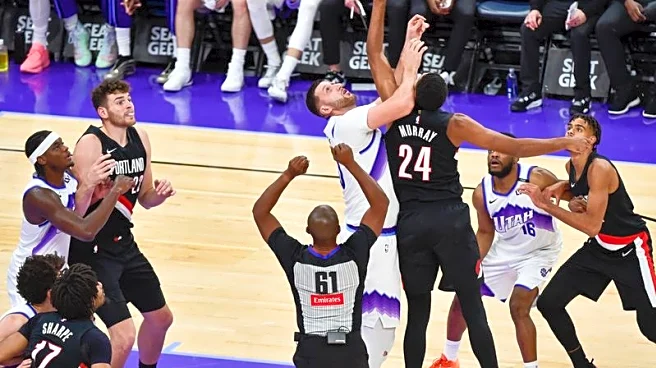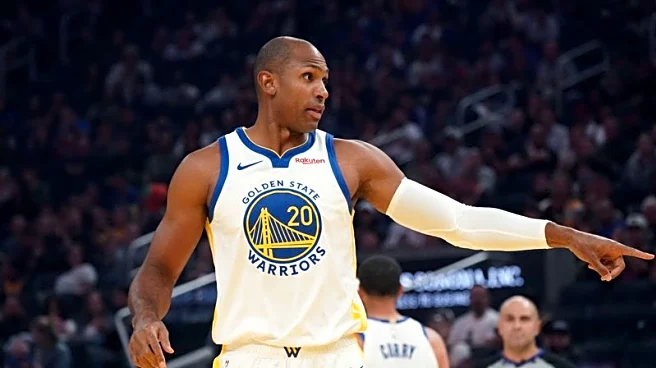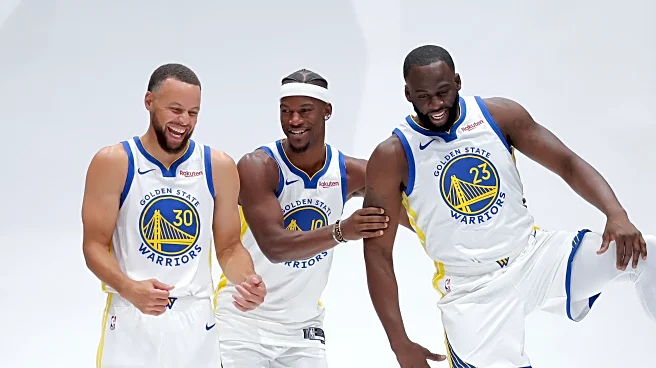What's Happening?
The Golden State Warriors have finalized the signing of veteran center Al Horford after a prolonged contract dispute involving star forward Jonathan Kuminga. Horford, who has spent seven seasons with the Boston Celtics, expressed his desire to end his career
with the Warriors. The decision was influenced by his ambition to continue playing for a championship contender, especially after Celtics' star Jayson Tatum suffered a significant injury. Horford's move to the Warriors aligns with his personal goals and the team's competitive aspirations, as he joins forces with Stephen Curry, aiming for another championship run.
Why It's Important?
Al Horford's signing with the Golden State Warriors is significant for both the player and the team. For Horford, it represents an opportunity to compete for a championship with a team that matches his competitive timeline. For the Warriors, acquiring Horford strengthens their roster, especially in light of Jayson Tatum's injury, which has impacted the Celtics' championship prospects. This move could shift the balance of power in the NBA, as the Warriors aim to capitalize on their strengthened lineup to pursue another title. The decision also highlights the strategic considerations players make regarding team dynamics and championship potential.
What's Next?
With Horford now part of the Warriors, the team is expected to focus on integrating him into their system and maximizing their championship potential. The Warriors will likely strategize around their new lineup, considering Horford's experience and skills. As the NBA season progresses, the Warriors' performance will be closely watched to see how Horford's presence influences their title contention. Additionally, the Celtics will need to reassess their strategy in light of Tatum's injury and Horford's departure, potentially exploring new player acquisitions or adjustments to maintain competitiveness.
Beyond the Headlines
Horford's move to the Warriors underscores the broader trend of veteran players seeking teams with strong championship prospects. This decision reflects the importance of aligning personal career goals with team objectives, particularly in the context of injuries and team dynamics. The shift also highlights the strategic maneuvers teams must undertake to remain competitive in the NBA landscape, balancing financial considerations with the pursuit of titles.















